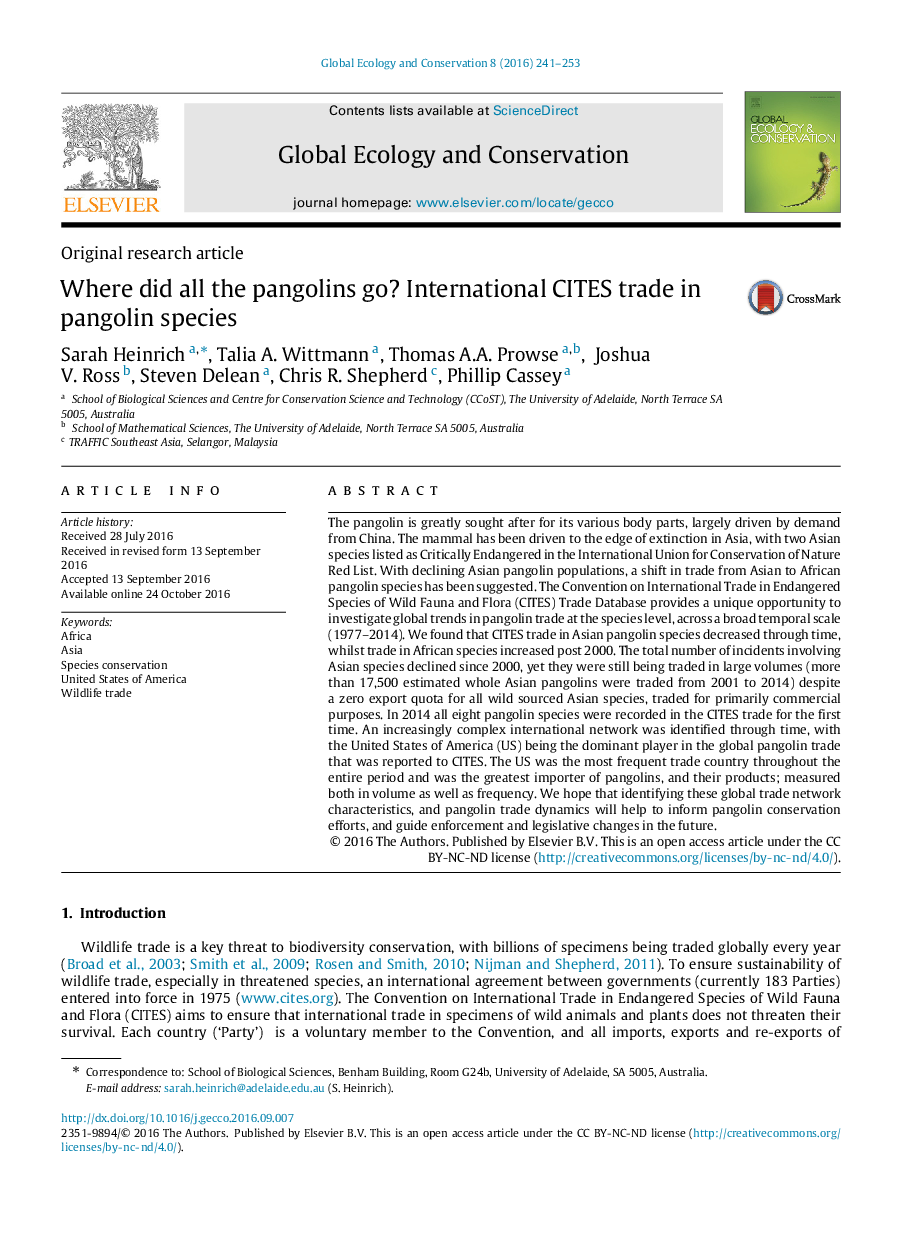| Article ID | Journal | Published Year | Pages | File Type |
|---|---|---|---|---|
| 8846271 | Global Ecology and Conservation | 2016 | 13 Pages |
Abstract
The pangolin is greatly sought after for its various body parts, largely driven by demand from China. The mammal has been driven to the edge of extinction in Asia, with two Asian species listed as Critically Endangered in the International Union for Conservation of Nature Red List. With declining Asian pangolin populations, a shift in trade from Asian to African pangolin species has been suggested. The Convention on International Trade in Endangered Species of Wild Fauna and Flora (CITES) Trade Database provides a unique opportunity to investigate global trends in pangolin trade at the species level, across a broad temporal scale (1977-2014). We found that CITES trade in Asian pangolin species decreased through time, whilst trade in African species increased post 2000. The total number of incidents involving Asian species declined since 2000, yet they were still being traded in large volumes (more than 17,500 estimated whole Asian pangolins were traded from 2001 to 2014) despite a zero export quota for all wild sourced Asian species, traded for primarily commercial purposes. In 2014 all eight pangolin species were recorded in the CITES trade for the first time. An increasingly complex international network was identified through time, with the United States of America (US) being the dominant player in the global pangolin trade that was reported to CITES. The US was the most frequent trade country throughout the entire period and was the greatest importer of pangolins, and their products; measured both in volume as well as frequency. We hope that identifying these global trade network characteristics, and pangolin trade dynamics will help to inform pangolin conservation efforts, and guide enforcement and legislative changes in the future.
Related Topics
Life Sciences
Agricultural and Biological Sciences
Ecology, Evolution, Behavior and Systematics
Authors
Sarah Heinrich, Talia A. Wittmann, Thomas A.A. Prowse, Joshua V. Ross, Steven Delean, Chris R. Shepherd, Phillip Cassey,
